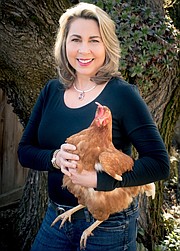Practical tips for hot-weather watering in the vegetable garden
Water is essential for a thriving vegetable garden.
However, with municipalities placing water use restrictions on homeowners, it can be a challenge to keep the garden hydrated during periods of excessive heat.
Here are some tips to help you keep your vegetable garden growing during hot conditions:
Watering basics
The optimal time to water your garden is in the morning, before the temperature peaks. This will help to conserve water and reduce evaporation. Plants will absorb more water with earlier watering and foliage will dry during the day, reducing the risk of fungal diseases.
In an effort to reduce water waste, always water around the base of the plant and its roots. This is where the water is needed and most useful to the plant.
Water individual plants deeply, giving them a good soaking. This allows the water to penetrate deep into the soil and encourage root development. Brief, shallow watering encourages shallow root growth, making plants more susceptible to heat stress.
Avoid overhead watering as this method produces wet foliage, which is a welcoming environment for many disease pathogens like powdery mildew and early blight. In addition, overhead watering does not sufficiently water plant roots and much of the water is lost to evaporation.
Water wisely
To conserve water, know how much individual vegetable plants need. Try to group plants with similar water needs together to avoid over or underwatering.
Any plant growing in a container will need more frequent watering than those grown in the ground. And during periods of extreme heat, container plants may need to be watered up to two or three times a day.
Smaller containers require more frequent watering than larger ones and terracotta containers tend to dry out more quickly than plastic or resin pots.
In-ground vegetable gardens can be watered twice a week during warm, dry conditions and more frequently in extreme heat. Pay close attention to vegetables that are fruiting, as these plants will need more water for fruit set and development.
Use the “finger test” to check soil moisture. Stick your finger into the soil up to the first knuckle to gauge moisture levels. Water when the soil feels dry.
Observe your plants and look for any signs of wilting or heat stress. Many plant leaves will curl in response to midday sun and high temperatures. This is a normal, physiological response to heat. While the best time to water is in the morning, water any heat-stressed and wilting plants as soon as possible.
Conserving water with mulch and shade
The benefits of mulching your garden are priceless. A layer of mulch around the base of your vegetables will help retain soil moisture and keep the soil cooler, plus, it also suppresses weeds. That alone is worth mulching!
Organic compost, grass clippings, dried leaves, straw, or chopped pine needles are a good choice for mulching the garden. And, no, pine needles will not change the pH of your soil. Make certain that the materials you are using for mulch are free of any herbicides.
Another option to protect your plants and conserve water during extreme heat is to erect a shade cloth or cover over your garden. Shade cloths can lower the temperature by as much as 10 degrees and will keep the soil cool and moist.
These lightweight covers come in a variety of sun-blocking strengths. For a vegetable garden, look for a cloth in the 40 to 50 percent range. A 40 percent shade cover blocks 40 percent of the sun’s rays. For smaller gardens or container-grown vegetables, a patio umbrella may suffice.
Floating row covers, which are often used to protect plants from frost, can also be employed as a makeshift shade cover.
By following these tips, you can help your vegetable garden survive and thrive during hot weather, ensuring a bountiful harvest even in the hottest conditions.
Candace Godwin is a Certified Idaho Master Gardener. The University of Idaho Extension, Kootenai County Idaho Master Gardener program is located in the UI Research Park, 958 S. Lochsa St., in Post Falls. Learn about us at https://www.uidaho.edu/extension/county/kootenai/garden or on Facebook. Visit us in person, email us at kootenaimg@uidaho.edu, or call us at (208) 292-2525. IMG services are free to the public.







